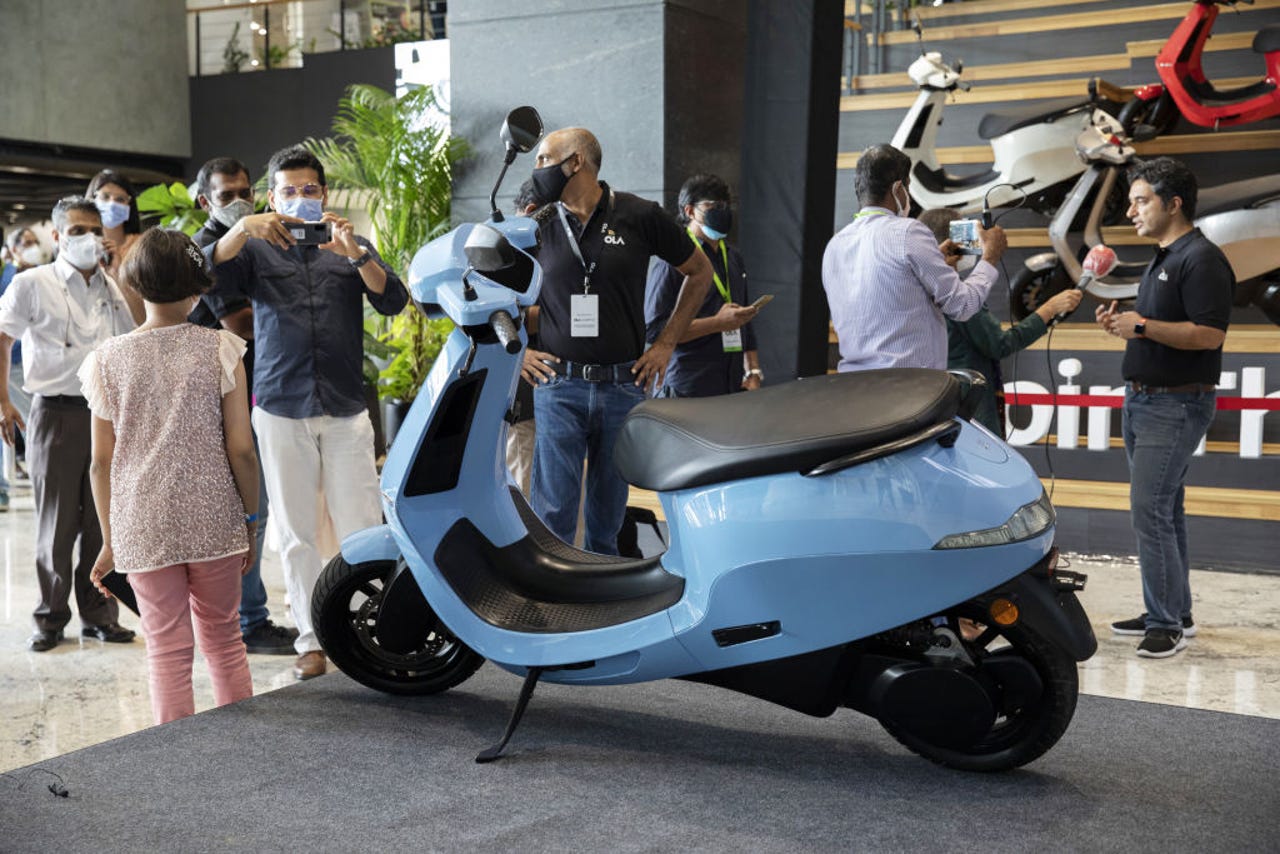India's EV industry faces heat as electric scooters go up in flames


There couldn't be a more horrifying metaphor for the fortunes of the electric scooter market in India. At least six scooters along with their batteries have spectacularly gone up in flames -- all within just a few days -- with exact causes still to be determined.
One of the first to catch fire belonged to Ola Electric, the EV division of homegrown rideshare Ola.
In one instance, an entire truck filled with scooters belonging to Jitendra Electric Vehicles caught fire. In another, a 49-year-old man and his 13-year old daughter tragically died in the Indian state of Tamil Nadu after their newly purchased scooter exploded and proceeded toasphyxiate the father and daughter.
Then, a few days ago, an entire dealership of Okinawa scooters burned down, causing a recall of 3,200 scooters.
The scooter meltdown is a disaster for all Indian EV players, but no one arguably has it as bad as Ola Electric.
Recently, Ola unveiled its $330 million plant in Tamil Nadu and its CEO Bhavish Aggarwal had breezily pronounced that his company would churn out 2 million electric scooters by the end of the year and -- in what could only be a delusional flight of fancy -- and 10 million of them by 2022.
Hubris can result in the unkindest of cuts. First, Ola encountered some serious delivery delays of its snazzy-looking S1 and S1 Pro electric scooters late last year, pushing back the dates for when its pre-booked customers could finally take ownership of their new rides.
Then, there was outrage as many received their 2-wheelers without important software features such as hill hold and navigation assist. Ola said it would take up to six months to outfit all their scooters accordingly.
And now there are these fires, which neither Aggarwal nor India can afford.
Stalled from going electric
The fact is, India has desperately been trying to whittle down its whopping $100 billion oil import bill and has already done a commendable job in harnessing solar for its grid energy in various states.
But it needs to go much, much farther, and quickly, and an electric vehicle revolution was exactly the kind of cog in the sustainable energy wheel that India needed to roll out. After all, the country is already a victim of widespread devastation such as frequent floods, intense heatwaves, and destructively incessant rainfall and storms -- mostly as a result of the climate crisis.
It is home to 11 out of 15 of the world's most polluted cities whose children are some of the biggest victims of respiratory illnesses.
The problem, however, is Indian consumers haven't exactly fallen for electric dreams en masse. A lack of charging infrastructure and accompanying range anxiety as well as unattractive price points for e-scooters have historically prevented the middle class from going electric -- only 152,000 units were sold in 2019 versus the 257 million that glide through the streets of Chinese cities.
In order to preserve all the hard work that e-mobility companies like Ola, Hero Electric, and Ather have made, the industry will have to scramble quickly to assure Indians that they will not burn away in a blaze every time they sit on one of their products.
Salvaging the dream
This isn't going to be easy -- there are many potential reasons behind what has transpired and some of them may be inter-related.
First off, Indian companies need to localise lithium-ion battery production. Many experts point to how most cells that are used in EV batteries are made for colder climates. In fact many Indian e-scooter brands are simply assembly operations of kits that are shipped to them from China.
If your battery is not optimally designed for your climate, you could run into thermal stability issues, say experts. A cell that cannot cool down appropriately will expand and suffer from a condition called thermal runway which can lead to fires.
Others say that it's a little more complicated than only looking at ambient temperature and cooling mechanisms on a scooter, which are admittedly at inferno-like levels in India. If that were the case, lithium ion batteries in smartphones would be popping off as if it were a permanent and horrifying celebration of Diwali -- yet, they don't.
That's because a lithium cell worth its salt is also regulated by a good Battery Management Software (BMS) and if so, it can easily exist and function at temperatures of up to 120 degrees Celsius, say experts. The quality of cells, the charging and discharging characteristics, and how they are packed next to each other also have a major impact on how the battery performs.
Apparently, for all the scooter fires and panic surrounding them, lithium batteries are still very safe and those that follow the AIS 156 optional best practices standard established by the Automotive Research Association of India (ARAI) where batteries are subjected to direct and indirect flames for over two minutes should be technically fine.
Moreover, as industry observers will remind you, any nascent business will have growing pains -- anyone remember the outrage around failing seatbelts, airbags and brakes? Likewise, all of this should eventually get sorted out.
The fires couldn't have come at a worse possible time though.
Acute chip shortages necessary for e-scooter components and lethargic supply chains thanks to the pandemic and capped by the Russian invasion of Ukraine have sent the price of fuel sky-rocketing. Indian EV makers trying to lure first-time, price-conscious Indian buyers will now have their work cut out for them, if they didn't already.